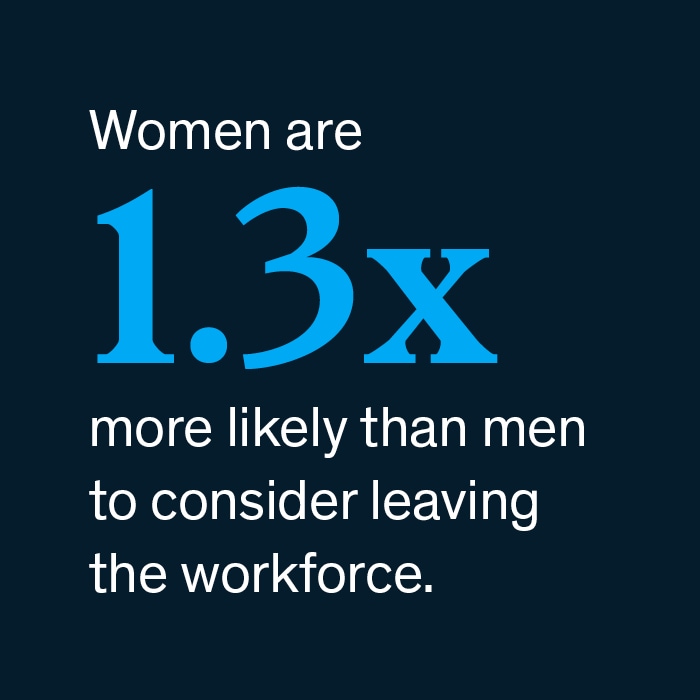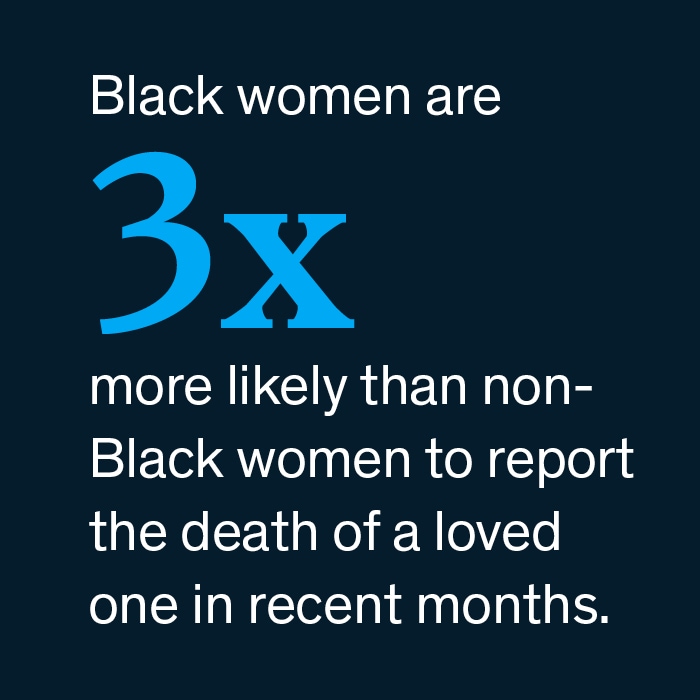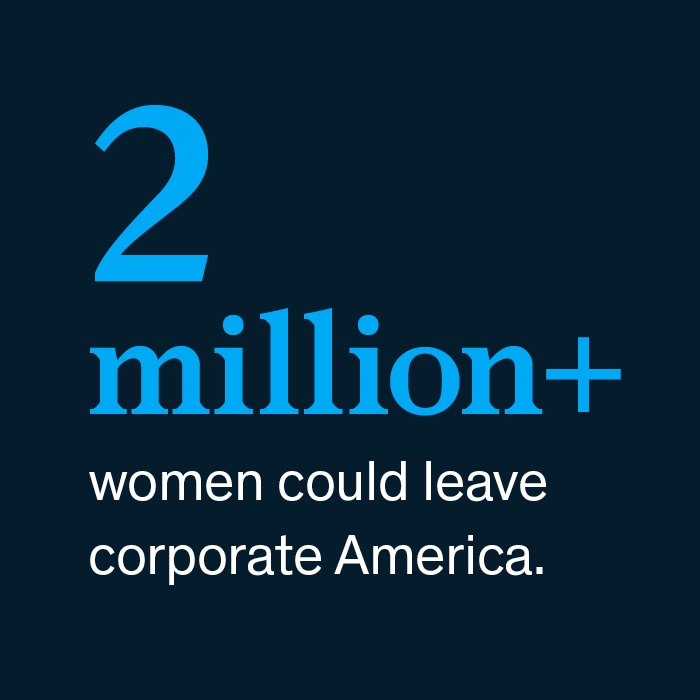Today we release the 2020 edition of Women in the Workplace, the largest study of the experiences of women and gender inequality in corporate America. Produced in partnership with Lean In, the annual report, published since 2015, analyzes workplace data and the experiences of men and women from the previous year.

The team began working on this year’s report before COVID-19. While the pipeline data reflect the end of year 2019 and predate the pandemic, the team pivoted quickly to ensure the final output would be relevant. “We rewrote our entire HR and employee surveys this past spring to best reflect the impact of the crisis on women so far,” says Jess Huang, a McKinsey partner and co-lead of the Women in the Workplace research. She explains that the longitudinal nature of the study will be particularly helpful next year. “Knowing that many companies made structural changes during and post-pandemic, we’ll be able to assess the impact on the pipeline,” she adds.
We spoke with Jess on what the biggest takeaways are from this past year’s findings are. Here’s what she had to say:
Women could be leaving the workforce more than men

Every year since 2015, women and men at every level have considered leaving and actually left their companies at comparable rates. But the pressures of COVID-19 and the new work environment have completely changed that landscape.
“It’s been surprising to see how many women are having such a difficult experience that they are considering stepping out of the workforce or switching to less demanding jobs,” says Jess. Women are 1.3 times more likely than men to have considered stepping out of the workforce or slowing down their careers—particularly mothers, senior women, and Black women.
In the worst case scenario, if women leave the workforce at the rates they say they are considering, corporate America could lose over two million women in the workforce—more than the number of women who graduate from college and graduate programs in the US each year—and over 100,000 women in senior leadership roles in the short term. “This could potentially wipe out the progress we've made over the last six years,” she adds.
Mothers, Black women, and senior women are feeling it the hardest

Working mothers absorb a disproportionate amount of childcare and homeschooling responsibilities, and that double shift has grown to a “double double” shift. Mothers of children under age 10 who are in dual-career couples are twice as likely as men in the same situation to spend more than five additional hours a day on household responsibilities than they did prior to COVID-19.
Meanwhile, one in four senior women has considered stepping out of or slowing down in their careers. “This is particularly concerning given senior women can have an outsized impact on diversity and inclusion at their companies,” says Jess. “Part of the reason they may feel so exhausted and always on is because they are more likely than senior men to champion diversity, equity, and inclusion efforts and act accordingly,” she adds. “They are also more likely to mentor or sponsor women of color.”
Black women are facing additional unique challenges from both COVID-19 and recent events of racial injustice. They are three times more likely than non-Black women to report the death of a loved one as a recent challenge. “It’s critical that allyship—coupled with action—becomes part of the answer here,” Jess adds. Our data show that while over 60 percent of employees consider themselves to be allies to women of color at work, relatively few take consistent action.

Women in the Workplace
Companies need to rethink work norms

Next year’s pipeline data will show the impact of COVID-19 on women’s representation—both in terms of decisions companies have made in reorganization and potential attrition due to women stepping out of the workforce. Every year our firm has conducted this research, we’ve seen that attrition is not a driver in the difference between men and women’s representation, but this could be different next year, possibly as a result of the shift to remote work.
“We’re really at a crossroads right now,” Jess says. “The data tell us that while there are some benefits to remote work, employees are also dealing with financial uncertainty, burnout, and mental health issues.” As a result, certain groups are really struggling, like working moms, Black women, and senior women.
Companies are at a place where they need to be deliberate about redesigning this new workplace or else risk losing the women who are struggling the most. Work-life flexibility was the number one issue raised by survey participants regarding workplace inclusion by women and men last year. In fact, companies anticipate that increasing flexibility could allow them to better attract and retain diverse talent across different geographies.
“This means rethinking some previous workplace norms,” says Jess, “such as what productivity looks like, or supporting employees’ mental health, or fostering inclusion in a remote setting.”